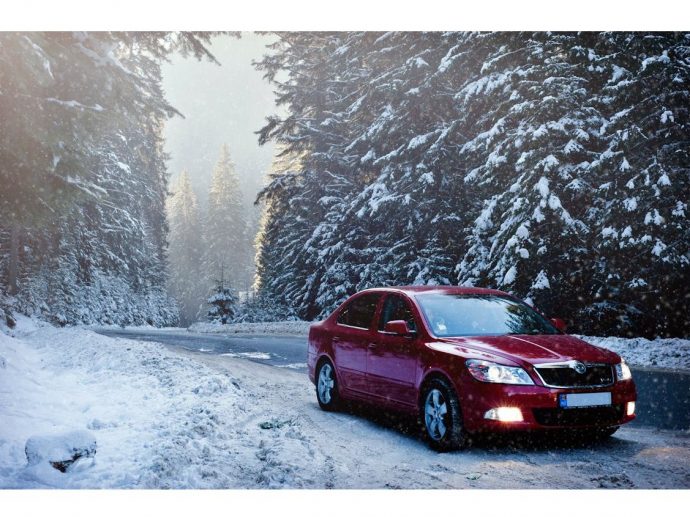Categories more
- Adventures (16)
- Arts / Collectables (15)
- Automotive (37)
- Aviation (11)
- Bath, Body, & Health (76)
- Children (6)
- Cigars / Spirits (30)
- Cuisine (16)
- Design/Architecture (21)
- Electronics (12)
- Entertainment (4)
- Event Planning (5)
- Fashion (44)
- Finance (9)
- Gifts / Misc (6)
- Home Decor (44)
- Jewelry (40)
- Pets (3)
- Philanthropy (1)
- Real Estate (14)
- Services (22)
- Sports / Golf (14)
- Vacation / Travel (60)
- Watches / Pens (14)
- Wines / Vines (24)
- Yachting / Boating (15)
16 Road Safety Tips and Tricks for Winter
Published
01/09/2025From first-time winter drivers to seasoned road warriors making daily commutes, winter driving requires some adjusting. Conditions can vary wildly depending on the day and region you drive. As a driver, you are responsible not only for your vehicle and your passengers but have a responsibility to other drivers on the road to drive cautiously and efficiently.
Here are some key road safety tips and tricks for winter.
Check Your Tires
Inspect your tires to ensure they have proper tread depth to maintain traction on icy roads. Winter tires or all-season tires are a must. A set of winter tires has deeper treads and softer rubber for improved grip and is optimized to prevent skidding in slippery conditions.
Check Tire Pressure Regularly
Cold air reduces tire pressure. Check your tire pressure every week to keep it within recommended levels. Inflate tires to improve fuel efficiency and prevent premature damage or wear.
Inspect Your Brakes
Test your brakes to ensure they respond smoothly. Any brake issues should be handled before winter commences—reliability matters. A driver needs to be able to stop their vehicle at a moment’s notice.
Pump the Brakes to Stop
When you need to stop quickly, pump the brakes. Slamming on the brakes when it’s snowy, or ice could cause your vehicle to slide. A gentle, quick pumping is your best approach when braking hard.
Driving Over Salt Brine for Roads
Salt brine for roads is a popular option. Roads treated with salt brine carry less ice. However, a winter driver should still navigate cautiously. Avoid sudden braking or accelerating, and maintain a safe, comfortable speed.
Careful with Corners
Never brake hard or accelerate while turning a corner on a snow—and/or ice-covered road. Approach and turn with caution. If the vehicle starts to slide on a corner, ease off the brakes and point your steering wheel in the direction you want to go. Eventually, your tires will catch.
Stock Up on Car Fluids
Ensure you have winter-specific car fluids stocked up in your vehicle. Have extra bottles of windshield washer fluid and engine coolant designed for sub-zero conditions ready.
Downshifting for Hills
When making your way down a steep hill, a car with a standard transmission can be downshifted into a lower gear to slow down. It’s key not to feather the clutch when doing this, as doing so could cause skidding.
Stay Updated on Weather Conditions
Check weather forecasts before you drive away. If there is an upcoming snowstorm, plan accordingly or postpone your trip. Especially for driving over long distances, continue checking in for real-time updates on road conditions.
Always Clear Snow and Ice From Your Vehicle
Move around your vehicle and remove all snow and ice from your windshield, windows, and roof. Ensure there is nothing to block your visibility, fly off your vehicle, and potentially endanger others.
Be Visible to Other Drivers
Make an extra effort to signal and complete a turn or merge more cautiously than you normally would. Keep your headlights on and clear of snow. Be as visible as possible to the drivers around you to reduce the risk of a collision.
Avoid Using High Beams
During heavy snowfall, winter fog, and storms, high beams will impair your visibility more than help. Their light reflects off everything in front of your vehicle. Rely on your regular headlights to maximize visibility during a winter storm.
Look for Movement on the Road
During winter, keep your eyes open for all movement on the road. It could be a vehicle, cyclist, pedestrian, or an animal. Any movement is a sign to slow down and possibly stop to avoid an accident.
Freezing Rain and Black Ice
At some point, every driver will be caught driving in freezing rain, leading to slippery roads and black ice. The chances of losing control of your vehicle are greater, and your ability to see the ice in front of you is far more difficult. Be aware of these risks if you continue to drive.
Keep a Safe Distance
In winter, a driver needs to be able to stop and avoid a collision. Under ideal conditions, this is a three-metre distance for every one second. On a slippery winter day, a vehicle may need three times more space to stop than on a dry road.
Avoid Dangerous Trips
If it’s a blizzard outside and you’re uncomfortable driving in these conditions, don’t. Avoid dangerous winter driving trips whenever possible. Let the snow fall and the snowplows do their work. After salt brine for roads is applied and the path is clear, this makes for a much safer winter driving experience.
A city’s snowplows and salt trucks will work first on the main roads. Avoid back roads and side streets during storms, as they may be unplowed or unsalted.















